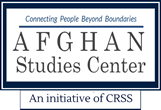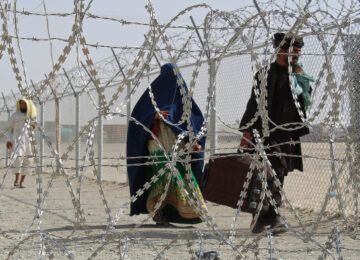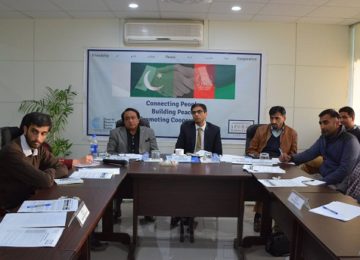October 13, 2017
In the first eight months of 2017, Afghan government revenues grew by nearly 13 per cent compared to the same period of 2016. This follows on from strong revenue performances in 2015 and 2016 and is one of the few positive trends in the Afghan economy, in contrast to its continuing weak overall showing in terms of economic growth and employment. Guest authors Bill Byrd and M Khalid Payenda* look at how the government has achieved this revenue growth and how it could maintain it. They also look at how modest economic growth could be encouraged and warn of the need to minimise any economic disruption and revenue losses during the next election cycle, given that both parliamentary and presidential elections are now looming over the horizon.
Strong revenue performance: what and how?
The Afghan government is performing well in terms of increasing revenues, with the double-digit growth in 2015 and 2016 continuing into 2017 (see earlier reporting here. After increasing by 11.4 per cent in the first half of the year, revenue has grown robustly in the seventh and eighth months as well and in the first eight months as a whole is up by 12.9 per cent compared to the same period of 2016. (1)
Importantly, and in contrast to 2015 and 2016, the revenue increase in the first half of 2017 was not due to rises in tax rates. On the contrary, Afghanistan was forced under the conditions of its entry into the World Trade Organisation to reduce some import tariff rates, costing the government budget roughly Afs 3-5 billion (on the order of $45-70 million) in annual revenue. (2)
Nor has depreciation of the Afghan currency – which would artificially raise revenues denominated or collected in foreign currency – accounted for any of the revenue growth. The exchange rate of the Afghani against the US dollar actually appreciated slightly in the first half of 2017 as compared to the first half of 2016. (3) Though part of the increase in revenues may be attributable to a slight uptick in inflation, the bulk of the solid revenue performance so far this year reflects the fact that the government has made stronger and more successful efforts to collect the revenues that are due.
Specifically, in the first half of 2017, revenues denominated or collected in foreign exchange accounted for around 40-45 per cent of total revenue and increased by 13-14 per cent compared to the same period last year. As noted, none of this increase can be attributed to depreciation. (4) The remaining roughly 55-60 per cent of total revenue was denominated and collected in Afghanis. It increased by around 10 per cent, but here inflation needs to be taken into account. There was a six per cent increase in the consumer price index, so this figure can be deflated by six per cent to remove the impact of inflation. (5) Thus, a little over half of the increase in Afghani revenues, or no more than about one-third of the total increase in revenue, can be attributed to inflation. This means that, after subtracting the effect of inflation and taking into account that the exchange rate did not depreciate, revenue growth on the order of eight per cent in the first half of 2017 can be attributed to stronger and more successful government revenue collection efforts.
The performance of customs duties and fees has been notable, increasing by nearly 15 per cent during the first half of 2017. This turnaround from the poor performance of customs collections in past years is impressive. The major factors here appear to have been customs units managing to reduce the incidence of mis-declaration of goods (falsely labelled in order to pay a lower tariff rate) and under-valuation of goods (declared at below the actual import price so as to lower duties). The average value of customs declarations in the first seven months of the current year rose by six per cent compared to the same period of last year, most likely reflecting less under-valuation of imports. Another indicator of improvement is the 13 per cent increase in the number of trucks reported by the Customs Department in the first seven months of 2017 compared to the same period in 2016. This increase may, in part, reflect growth in the volume of imports, but also, in part, less revenue leakage, perhaps due to some trucks that previously had crossed the border without submitting a customs declaration now providing declarations.
Other areas of progress
As well as the strong growth in revenues, it is worth noting a few other bright spots in the macroeconomic and economic reform spheres. These include gaining the International Monetary Fund’s (IMF) ‘seal of approval’, accessing more on-budget aid, getting off the money-laundering ‘watch list’ and some progress in anti-corruption efforts.
Following the promulgation of the Afghanistan National Peace and Development Framework (ANPDF) at the Brussels Conference on Afghanistan (BCA) on 5 October, 2016, when $15.2 billion was pledged by donors over four years, Afghanistan has made further progress on economic reforms while maintaining macroeconomic stability. The latter is evidenced inter alia by continuing low (single-digit) inflation, a stable foreign exchange rate for the Afghani and maintaining foreign exchange reserves in excess of $7 billion (sufficient to cover more than 10 months’ worth of imports). The Afghan government’s macroeconomic program has been endorsed by international financial institutions, resulting in confirmation of additional financial support.
On 24 May 2017, the IMF Board approved the completion of the first review under Afghanistan’s Extended Credit Facility (ECF). Though the ECF includes only a small amount of financial assistance – $6.2 million was disbursed upon completion of the first review — the fact that Afghanistan has remained on-track with the IMF program constitutes an important seal of approval for the country’s macroeconomic management. The IMF seal of approval is also significant because it is required for other international agencies to provide aid directly to the Afghan budget, as well as for bilateral donors who provide some of their aid in this way (either directly or through the Afghanistan Reconstruction Trust Fund, the ARTF).
Related, on 12 July, a $482.3 million package of new assistance from the World Bank and the donor-financed ARTF was signed. This package supports various development projects, (6) and it also includes a $100 million development policy grant, which consists of direct, un-earmarked budget support to the Afghan government (ie not tied to any specific project). This is in addition to the ARTF ‘recurrent window’, which disburses around $400 million per year to cover part of the operating budget.
Another recent achievement is that on 23 June, Afghanistan was removed from the international Financial Action Task Force (FATF) ‘grey list’ of countries being monitored for Anti Money Laundering/Combatting the Financing of Terrorism (AML/CFT) risks and compliance. This milestone is an important signal of international confidence in the country’s banking practices from a money laundering/terrorism financing perspective.
Finally, some progress has been made in fighting corruption. The recently formed Anti-Corruption Justice Center (ACJC) has received 95 cases, of which 15 have been referred for prosecution. Thirty-one individuals have already been sentenced to prison for a combined total of 209 years, close to seven years each on average. These include three officials from the Ministry of Urban Development convicted of corruption and six from the Ministry of Finance (MoF) for taking bribes. To date, US$ 9 million has been recovered from offenders.
Looking ahead: how to navigate the economic and election-related ‘headwinds’
These successes aside, the fundamental problems of Afghanistan’s weak economy and high joblessness remain unchanged and there appears little prospect for improvements in the short run. The economic headwinds stem in part from the earlier shock to aggregate demand as a result of the sharp reduction in international military expenditures associated with the withdrawal of the vast bulk of international forces between 2012 and 2014, combined with the Afghan economy’s limited ability to adjust its structure in response to the shock and shift to other drivers of growth. However, deteriorating security and political uncertainty in recent years have contributed to the ongoing economic malaise. These problems are likely to constitute a continuing drag on economic growth in the coming several years.
So modest expectations definitely are called for, but what can be done to improve the economy at least somewhat in the face of these ‘headwinds’? A critical priority is to prevent the fiscal and economic situation from getting worse in the run-up to and during the upcoming election cycle (with parliamentary elections scheduled for 2018 and the next presidential election for 2019). The fiscal crisis that occurred around the 2014 presidential election – characterised by a haemorrhage of government revenue, cash management problems, imposition of extraordinary controls stopping some budgeted and committed expenditures, building significant government arrears, an urgent request for ‘emergency’ short-run aid and inability to complete review of the IMF program – was very damaging. It took considerable time and effort for the government and Ministry of Finance to turn the situation around and get back on track. Afghanistan cannot afford a repeat of anything like such a crisis in the coming two years and some measures could help to prevent that.
First, a stable, cohesive, effective management team at the MoF, and also at Da Afghanistan Bank (DAB – the country’s central bank), will be crucial. The recent management changes at the MoF, resulting in all deputy ministers now being confirmed in their positions (as opposed to some of these positions being vacant and filled in an acting capacity hitherto), provides grounds for hope that this will be possible. It will be essential for political interference in the ministry’s work of budgeting, macroeconomic management and especially revenue collection to be avoided during the election season and the minister and his team need to be empowered to prevent such problems from arising.
Second, the catalyst of the 2014 fiscal crisis was extremely weak revenue mobilization performance, which reached its nadir during and immediately after the election. While it is neither necessary nor desirable for revenue to keep growing as rapidly as it did during the impressive turnaround of 2015-16, continuing robust revenue increases and at least maintaining the revenue-to-GDP ratio, will be important in preventing the kind of revenue erosion seen in 2014.
Third, a contributing factor exacerbating the 2014 fiscal crisis was the MoF’s lack of access to funds, which severely hindered and greatly complicated short-run cash flow management as its deposit balance with DAB was drawn down and virtually exhausted in the latter half of 2014. (7) To avoid such problems in the future, the MoF’s deposit balance at DAB should not become the binding constraint on short-run cash management. Options for greater flexibility can be pursued, whereby if necessary for short-run cash management, the MoF could temporarily run a modest negative deposit balance, incur an overdraft, or engage in some form of limited short-term borrowing from DAB as necessary and appropriate.
Making macroeconomic policy more growth-friendly
Although expectations of higher economic growth should be kept modest, the government could encourage this through macroeconomic policy, public expenditure management and improving the business environment.
With regard to the overall macroeconomic stance, although any attempt at major fiscal stimulus through deficit financing via government borrowing would be risky and must be avoided, fiscal policy should not be contractionary (ie shrinking aggregate demand), either. For example, in 2014 the government incurred a modest domestically-financed fiscal deficit (after – ie not including – donor grants) of about 1.7 per cent of GDP, by running down MoF deposits at DAB, with no adverse macroeconomic consequences in a recessionary economic environment. On the other hand, in 2016, domestic fiscal policy turned slightly contractionary, with the government running (after donor grants) a small fiscal surplus of 0.9 per cent of GDP, manifested in an increase in MoF deposits at DAB.
Public expenditure – how it is spent and on what – can modestly support a more buoyant economy. One priority is to improve and expedite budget execution – this is important in a country where budgeted expenditures are equivalent to around one-third of GDP. If budgeted funds are not actually spent and/or if there are long delays in budget execution, the stimulating effect of public spending on the economy gets lost. Afghanistan suffers from chronic shortfalls in its execution of the development budget (money for public investments and other development projects), whereas the recurrent budget (money for running costs, including salaries) tends to get fully spent. On average, only around half of the development budget actually gets spent each year. Increasing the development budget execution rate would help create jobs, build infrastructure, stimulate economic growth and over time generate more revenues for the government.
Although a common perception is that poor budget execution is due to low capacity in implementation of projects, in reality, budget execution issues in Afghanistan are more complex. One of the main reasons for low budget execution is the quality of project preparation. Currently, many projects get pushed into the budget that are poorly prepared, or in some cases are not prepared at all and in reality are little more than vague concepts. Also, no matter how well-designed and prepared, a project cannot achieve spending targets if the plan is not realistic. Hence improving the front end of the budget process is important, including ensuring that the projects in the budget are fully costed, with a realistic spending timetable.
Shifting the composition of expenditures toward quick-disbursing activities that have a high ‘domestic content’ and relatively low spillover into imports, such as labour-intensive public works and cash-for-work programs and other transfers to the poor, can increase the macroeconomic impact of a given level of public spending. Expenditures that have a higher ‘multiplier’ effect on aggregate demand can be prioritised, also including those with a high salary and other recurrent spending component, such as education, health and direct cash transfers, as well as the security sector. (8)
On the revenue front, the relatively high level of taxation of Afghanistan’s small tax base of formal-sector companies and especially the cumbersome tax administration processes, constitute another obstacle to business activity (beyond the broader security, political and economic headwinds) (see earlier AAN reporting here). For example, overly high tax assessments, combined with the requirement that 50 per cent of the assessed amount be paid in advance to avoid very high penalties during the appeal process, squeeze those companies that try to comply with the law. On the other hand, non-compliant taxpayers can avoid such problems by paying bribes – a phenomenon which also breeds resistance within the system against reforms that would bring in greater revenue. Simplification and streamlining of tax administration, E-filing (recently launched for large taxpayers, planned to be rolled out for medium taxpayers next year) and reducing the pre-payment requirement during appeal and the penalties for delayed payment (both currently under consideration) would begin to improve the situation. More generally, the way forward is to minimise the multiplicity of stages in obtaining tax clearances and reduce the opportunities for discretionary contacts between companies and tax officials. This could be accomplished by combining E-filing with an automatic acceptance of tax return, followed by randomised and risk-based auditing of returns.
Turning to customs duties (currently the most important single source of revenue), further improving the customs administration and containing corruption will be a priority and continuing robust increases in customs collections, as seen in the first half of 2017, would support overall revenue growth. In addition to the role of import tariffs in raising revenue, they can also be an instrument, if used judiciously and in moderation, for protecting and nurturing the development of domestic production. While high tariffs would be inappropriate, ineffective and most likely would further encourage smuggling, it does not make sense to cut tariffs and provide no protection at all for goods which Afghanistan is producing domestically, where it has some, at least, potential comparative advantage and where the economy has a capacity for a supply response (ie the right incentives would stimulate greater production). Many agricultural products fit this bill and, moreover, Afghanistan does currently import very large amounts of agricultural goods (some of them implicitly or explicitly subsidised by the exporting country).
Other obstacles to private sector development are legion. A simpler, more business-friendly regulatory environment would be highly desirable and while eliminating corruption altogether is an unrealistic objective, it needs to be contained and rendered less debilitating to businesses. Improvements in both of these dimensions are especially important for smaller businesses and start-ups. However, those benefiting from bribes associated with the current regulatory complexity will try to block reforms. It must also be recognised that a better investment climate, even if it can be achieved, is unlikely to translate any time soon into higher private investment and expansion of business activity, as long as the major security and political headwinds as well as uncertainty and short-termism remain prevalent.
What should international actors do?
Afghanistan’s international partners can and should provide meaningful support to Afghanistan’s macroeconomic stability and growth agenda, while recognising the need for modest expectations:
In the face of security challenges and political uncertainty during the next election cycle, stability in international strategy and support for Afghanistan will be critical. Medium-term support was agreed at the 2016 Warsaw (for the security sector) and Brussels (for civilian assistance) meetings, generating international commitments covering 2017-20; these need to be reaffirmed.
Shifting the composition of aid in favour of giving more assistance directly to the Afghan government budget (on-budget) and toward quick-disbursing, high domestic content activities, would help provide a modest boost to the economy.
Endorsing a modest degree of fiscal flexibility and supporting a non-contractionary fiscal policy stance (after donor grants) would help enable the macroeconomic framework to be modestly growth-friendly in the current recessionary economic environment.
International actors can also support efforts to improve the investment climate and help contain corruption, while recognising that these will yield benefits only over the medium-term and, in particular, if the protracted conflict ends or at least there is a major reduction in violence.
Conclusion
The government has done well to maintain robust growth in revenues over the first eight months of this year and has continued to demonstrate sound macroeconomic management. However, the next few years will test whether these achievements can be sustained in the face not just of insecurity and insurgent violence, but also political uncertainty during the approaching election cycle. Sustaining steady revenue increases (even if at a slower pace than during 2015-16), effective macroeconomic management and stable international support will be crucial for navigating the next several years. As we have said, there are bright spots – which should not be overlooked – but the Afghan economy is still weak and unemployment high. Government and donors can take some pro-active measures which would modestly improve the prospects for economic growth, but expectations here have to remain realistic.
* Bill Byrd is a senior expert at the US Institute of Peace and M Khalid Payenda is Deputy Finance Minister in the government of Afghanistan. Both co-authors have closely followed fiscal and macroeconomic developments in Afghanistan for many years and published extensively on these subjects, including earlier updates on revenue performance. Research support by Hassen Ullah Ahmadzai, Sub Director Fiscal Policy in the Ministry of Finance, is gratefully acknowledged. The views expressed in this paper are the authors’ personal views and should not be attributed to the Ministry of Finance, the Afghan government or to the US Institute of Peace (which does not take policy positions).
References
(1) Revenue and fiscal data presented in this paper are from the Ministry of Finance (Afghanistan Financial Management Information System); the calendar years mentioned refer to the corresponding Afghan fiscal year, which covers the period from approximately 21 December to 20 December (ie 2015 refers to 1394, 2016 to 1395, 2017 to 1396). The raw revenue figures show a decline of 4.4 per cent between the first half of 2016 and the first half of 2017 (from Afs 80,027 million to Afs 76,520 million). However, the former figure needs to be adjusted downward for the large one-time transfer of Afs 10,260 million from the Afghanistan’s central bank (DAB) to the budget (which is not a revenue and certainly does not reflect revenue mobilization efforts), as well as a one-time transfer of Afs 1,090 million from the Ministry of Urban Development. The resulting adjusted total revenue figure in the first half of 2016 that is appropriate for comparisons is Afs 68,677 million, yielding the 11.4 per cent revenue increase in the first half of 2017. The preliminary adjusted revenue figure for the first eight months of 2017 is Afs 104,435 million, a 12.9 per cent increase over Afs 92,514 million in the first eight months of 2016
(2) Based on estimates by MoF staff.
(3) The average of the monthly rates reported by DAB (midpoint of their buying and selling rates) actually appreciated slightly, from Afs 68.67 for US$ 1 in the first half of 2016 to Afs 67.53 for US $1 in the first half of 2017. (See here.)
(4) On the contrary, foreign exchange-denominated and/or collected revenues actually should be slightly inflated to account for the small exchange rate appreciation. However, this approach has not been adopted in the interest of taking a conservative approach in ascertaining the portion of revenue growth attributable to stronger revenue mobilization efforts..
(5) The best deflator to use would be the GDP deflator, but that is not available for six-monthly data and only with a lag for annual data. Generally the GDP deflator tends to be somewhat lower than CPI inflation; thus, using the latter results in a more conservative estimate of revenue effort and/or can be considered to incorporate at least to some extent the real growth of the economy, which was slightly over two per cent in 2016.
(6) Specifically, the package includes development projects supporting communities with internally displaced persons (IDPs) and returnees from Pakistan, urban development, electrification in Herat, establishment of a strategic grain reserve, rural all-seasons access roads and the women’s economic empowerment national priority program.
(7) The inability to spend budgeted amounts in 2014 resulted in the loss of aid that, otherwise, would have been available on a reimbursement basis, for example from the ARTF’s enhanced matching grant program for operations and maintenance spending.
(8) The May 2017 World Bank Afghanistan Development Update discusses the fiscal multiplier and estimates of the multiplier for different categories of expenditure, as well as options for increasing the multiplier and thereby raising the stimulus impact of a given level of public expenditure. These latter options — including increasing absorptive capacity and greater market competition/contestability in key sectors such as construction and banking — would have a positive impact only over time, whereas shifting the composition of expenditures in favour of quicker-disbursing and higher domestic content activities would have a short-run positive impact. (See here, pp 16-23.)
By Special Arrangement with AAN. Original link.
Disclaimer: Views expressed in the article are not necessarily supported by Afghan Studies Center.








